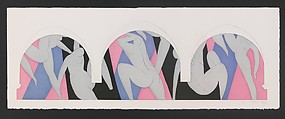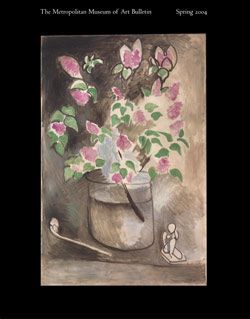Dance: After the Paris version of the Barnes Mural
Henri Matisse French
Not on view
This print depicts Matisse’s major mural composition Dance, commissioned in autumn 1930 by the renowned American collector Dr. Albert C. Barnes, of Merion, Pennsylvania. Barnes, who began collecting Matisse’s work in 1912, had by 1930 amassed the largest and most significant group of the artist’s oils, watercolors, gouaches, and sculpture in America. He wanted as the “crown jewel” of the collection a large mural for the two-story paintings gallery in his mansion.
Matisse chose the subject of the dance to embellish the three arches that extended above the French windows. For Matisse, the motif represented an expression of vitality and rejuvenation, a theme that had preoccupied him since he was inspired by the sight of the Catalan fishermen dancing the sardaña on the beach at Collioure in summer 1905. The simplified figures of the dancers, in exuberant poses, are arranged in a frieze that develops around the architectural features of the room. Through the simplicity of unshaded, flowing line, Matisse achieved a remarkable compositional harmony, at once emphasizing the decorative flatness and the dynamic rhythm of the arrangement. The mural was executed in 1932–33.
Due to rights restrictions, this image cannot be enlarged, viewed at full screen, or downloaded.


